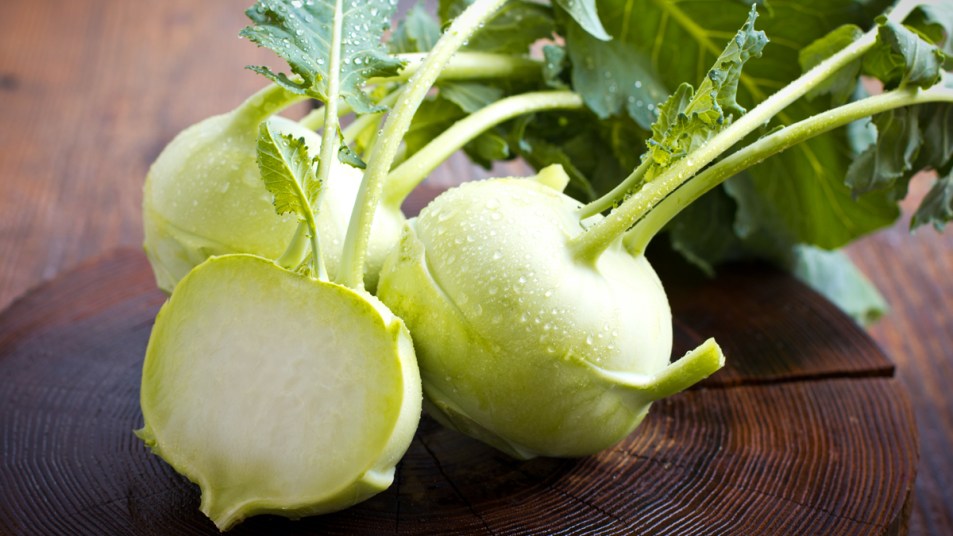This Unique Vegetable Can Boost Immune Health, Reduce Risk of Heart Disease, and Promote a Healthy Gut

Ready to spruce up your salads, sandwiches, and meals with a crunchy boost of nutrition? Kohlrabi is the snack you didn’t know you needed. Derived from the German word “kohl” for cabbage and “rabi” for turnip, this strange-looking vegetable has the consistency of a radish or a broccoli stem with a flavor that is mild, sweet, and peppery. It’s also not a root vegetable, though it looks like one. Instead, kohlrabi grows above ground and belongs to the cruciferous family, alongside cabbage, broccoli, and cauliflower.
So, why should you step out of your food comfort zone and try this unique veggie? Kohlrabi is a secret powerhouse of vitamins, minerals, and other nutrients that can provide a wealth of health benefits. According to the USDA, one cup of raw kohlrabi contains 83.7 mg of vitamin C and 0.203 mg of vitamin B-6 — both impressive servings of these essential vitamins. Vitamin C is crucial to immune defense as it encourages the production of certain white blood cells and works as an antioxidant to reduce inflammation and oxidative stress, according to studies in the Journal of Leukocyte Biology and Nutrients. As explained in another study from the Journal of Immunology Research, vitamin B-6 boosts the immune system response to a wide range of diseases by promoting the production of T cells, or the cells in the immune system that respond to specific foreign particles.
In addition to containing other important nutrients, such as vitamin A, folate, magnesium, manganese, and potassium, kohlrabi is an important source of powerful plant compounds that can reduce inflammation in the body. These compounds include anthocyanins, glucosinolates, and isothiocyanates, which are phytochemicals that are known to lower your risk certain cancers, including colon and prostate cancer, per the Journal of Preventive Nutrition and Food Science, the Journal of Agricultural and Food Chemistry.
Plus, a study published in the Journal of the American Heart Association found that the consumption of cruciferous vegetables, like kohlrabi, has been linked to a reduced risk of atherosclerosis in women and thereby a reduced risk of heart disease. The reason? The glucosinolates in cruciferous vegetables can widen blood vessels. Another study from the American Journal of Clinical Nutrition found that a high intake of anthocyanins can reduce stiffness in the arteries and lower blood pressure in women.
Kohlrabi is also high in soluble and insoluble fiber. Soluble fiber, which dissolves in water, slows down digestion and helps your body absorb more nutrients from your food. Insoluble fiber adds bulk to the stool and allows food to pass more quickly through the digestive tract. Both types of fiber are essential to a healthy gut, which is associated with a healthier immune system and a reduced risk of bowel diseases, via the journal Nutrients.
So, now you’re ready to reap all the benefits of this nutritious vegetable. But how do you eat it? Once you thoroughly peel the outside (the peel is tough and indigestible), you can enjoy your kohlrabi raw, steamed, boiled, or roasted. Toss it in a salad to replace croutons, or add thin, flat slices to your sandwich for an extra healthy crunch. You can also grate it into thin, fine strips and toss it into your coleslaw, cut it into chunks and sauté it with garlic and olive oil, grill it alongside your favorite summer vegetables, or simply use it as a vegetable dipper with ranch or French onion dip. As an added bonus, the leaves are edible, too!
















